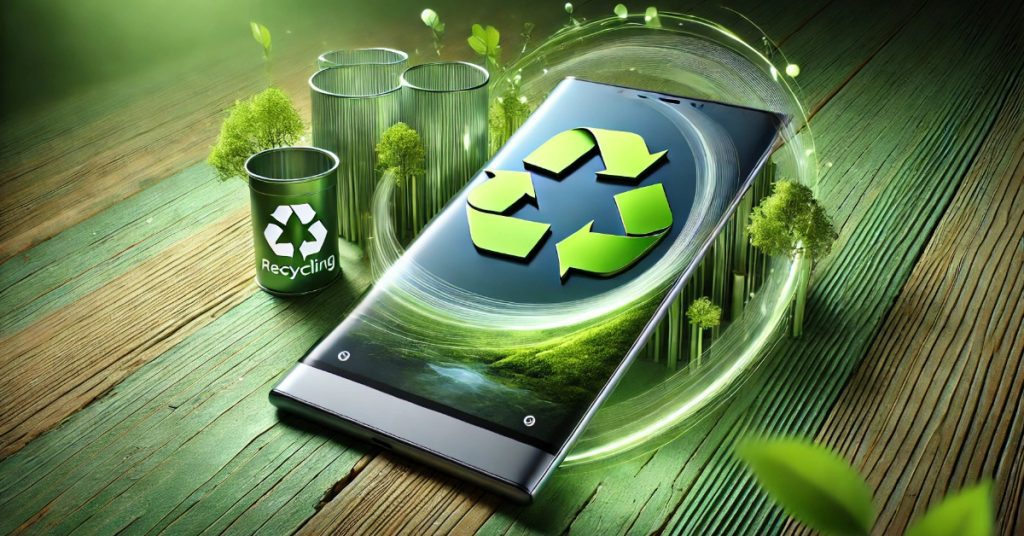Introduction
The rapid advancement of smartphone technology has significantly improved our daily lives, but it comes at an environmental cost. E-waste (electronic waste) is a growing concern, with millions of discarded smartphones contributing to pollution, hazardous waste, and resource depletion. In response, manufacturers are adopting eco-friendly initiatives, such as sustainable materials, better recycling programs, and energy-efficient designs.
This article explores how the smartphone industry is addressing e-waste and sustainability, examining whether smartphones are truly becoming more environmentally friendly.
Understanding the E-Waste Crisis
What is E-Waste?
E-waste refers to discarded electronic devices, including smartphones, laptops, tablets, and other gadgets. As new phone models are released yearly, old devices are often thrown away, leading to environmental challenges. According to recent studies, over 50 million tons of e-waste are generated annually, with only a fraction being properly recycled.
The Environmental Impact of Smartphone Waste
The production and disposal of smartphones contribute to various environmental problems:
- Toxic Chemicals: Smartphones contain hazardous materials like lead, mercury, and cadmium, which can leach into the soil and water.
- Carbon Footprint: The production of a single smartphone releases 50-100 kg of CO₂, contributing to climate change.
- Mining for Rare Earth Metals: Essential components like lithium, cobalt, and nickel are extracted from the earth, causing deforestation and pollution.
- E-Waste Dumping: Many discarded phones end up in landfills or are exported to developing countries, where improper disposal harms ecosystems and human health.
How Smartphone Companies Are Addressing Sustainability
1. Use of Recycled and Sustainable Materials
Many smartphone brands are now focusing on eco-friendly materials to reduce their environmental impact. Some examples include:
- Apple: Uses 100% recycled aluminum in iPhones and has reduced plastic packaging.
- Samsung: Introduced recycled ocean plastics in its Galaxy series.
- Fairphone: A modular phone brand that promotes sustainability by using ethically sourced materials and repairable parts.
2. Energy-Efficient Manufacturing and Carbon Reduction
Smartphone production requires a significant amount of energy. Companies are now adopting green energy solutions, such as:
- Renewable Energy Use: Apple and Google aim for 100% renewable energy in their production facilities.
- Lower Power Consumption: Newer smartphone models use processors and displays that consume less energy, improving battery efficiency.
- Carbon Neutrality Goals: Companies like Samsung, Apple, and Fairphone are setting targets for net-zero emissions within the next decade.
3. Longer Lifespan and Right-to-Repair Movement
A key solution to reducing e-waste is extending the lifespan of smartphones. Manufacturers are implementing:
- Durable Designs: Brands like Nokia and Motorola are making rugged smartphones with longer-lasting batteries.
- Right-to-Repair Laws: Apple, Samsung, and Google are now offering repair kits and spare parts, allowing users to fix their phones instead of replacing them.
- Software Updates for Older Models: Extending software support ensures that users can keep their phones for longer without needing an upgrade.
Are Eco-Friendly Smartphones the Future?
Challenges in Making Smartphones Fully Sustainable
Despite these efforts, challenges remain:
- Consumer Habits: Many users prefer upgrading to the latest model every 1-2 years.
- Lack of Proper Recycling: Even with recycling programs, only 17% of global e-waste is properly recycled.
- Limited Availability of Sustainable Phones: Brands like Fairphone are still niche, making eco-friendly phones less accessible to the mainstream market.
How Consumers Can Contribute to Sustainability
You can also play a role in reducing smartphone e-waste by:
- Keeping your phone longer instead of upgrading frequently.
- Trading in old devices through official recycling programs.
- Buying refurbished smartphones to reduce electronic waste.
- Using eco-friendly accessories, such as biodegradable phone cases.
Conclusion
Smartphone companies are making progress toward sustainability, but there is still a long way to go. E-waste remains a serious environmental issue, and while manufacturers are introducing eco-friendly materials, repairability options, and renewable energy practices, consumers must also change their habits to truly make a difference.
So, are smartphones becoming more eco-friendly? Yes, but not fast enough. The future of sustainable tech depends on both manufacturers and users working together to reduce e-waste and create a greener world.







